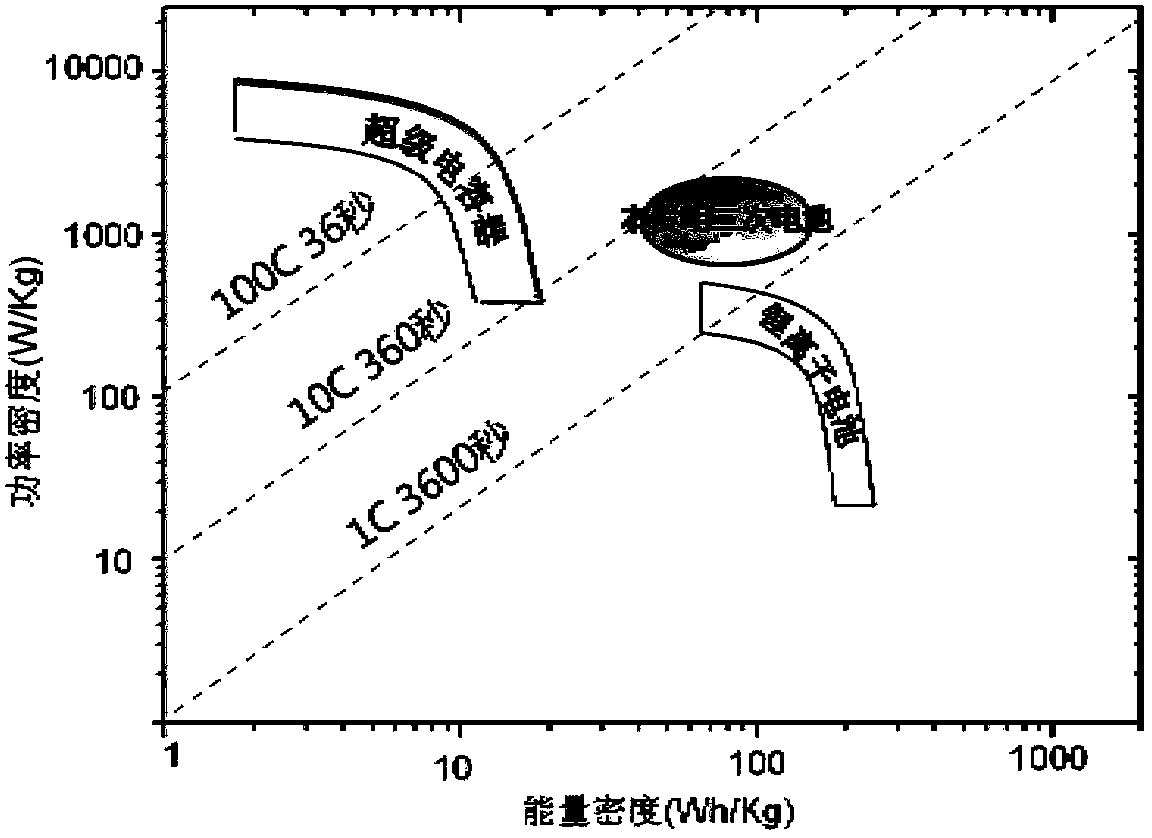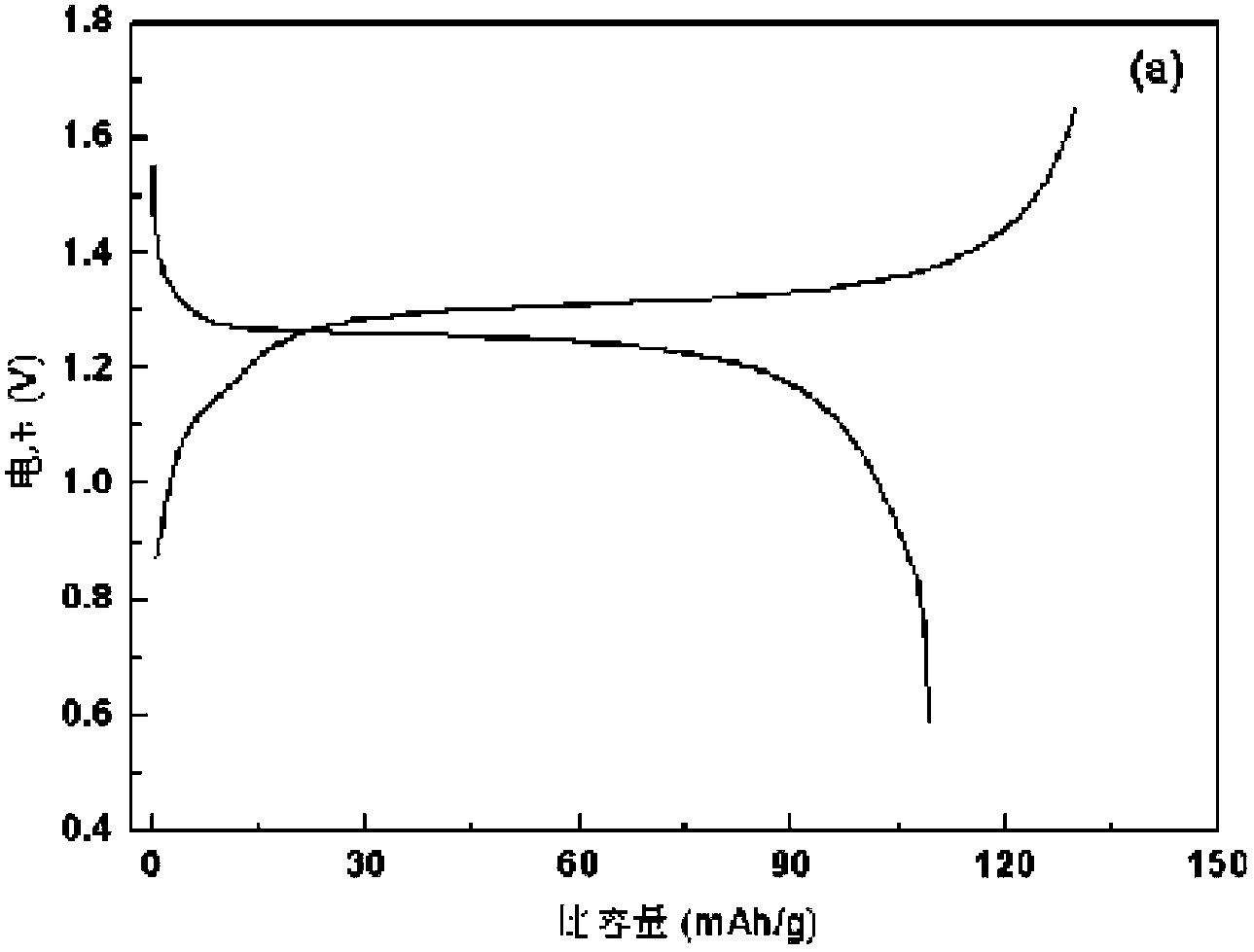Chargable chemical energy-storage device and application thereof
A technology of energy storage and devices, which is applied in the field of rechargeable chemical energy storage devices, can solve the problems of battery safety hazards, resource shortage, and poor recycling economy, and achieve the effects of high power density, long life, and high safety
- Summary
- Abstract
- Description
- Claims
- Application Information
AI Technical Summary
Problems solved by technology
Method used
Image
Examples
Embodiment 1
[0031] The positive electrode material PTAm (P an1) Mix with carbon tubes and binders in proportions of 80%, 15%, and 5%, but not limited to this proportion, grind evenly, coat on stainless steel mesh, and dry pole pieces for later use. The negative electrode material NTCDA-PI (P an 1) Mix with carbon tubes and binders in proportions of 80%, 15%, and 5%, but not limited to this proportion, grind evenly, coat on stainless steel mesh, and dry pole pieces for later use. Using non-woven fabric as the separator, 10M NaNO 3 The aqueous solution is used as the electrolyte, and the positive and negative electrodes are assembled into a rechargeable chemical energy storage device, which is charged and discharged at a rate of 0.5C, 1C and 5C. figure 2 The charge-discharge curve of the rechargeable chemical energy storage device at a rate of 0.5C for the first week and the cycle performance at a rate of 5C (the capacity retention rate after 500 cycles is 95%).
Embodiment 2
[0033] Following the method for electrode preparation in Example 1, carbon felt was used as a current collector to prepare positive electrode PTMA (P ca 2), negative NTCDA-PI (P an 1) Electrode, using non-woven fabric as separator, 6M NaCl aqueous solution as electrolyte, assembling positive and negative electrodes into rechargeable chemical energy storage devices, charging and discharging at 0.5C and 5C rates, see Table 1.
Embodiment 3
[0035] Following the method of electrode preparation in Example 1, positive electrode PTGE (P ca 3), negative NTCDA-PI (P an 1) Pole piece, using non-woven fabric as diaphragm, NaPF 6 Saturated aqueous solution of 100% is used as the electrolyte, and the positive and negative electrodes are assembled into a rechargeable chemical energy storage device, which is charged and discharged at a rate of 0.5C and 5C, as shown in Table 1.
PUM
 Login to View More
Login to View More Abstract
Description
Claims
Application Information
 Login to View More
Login to View More - R&D
- Intellectual Property
- Life Sciences
- Materials
- Tech Scout
- Unparalleled Data Quality
- Higher Quality Content
- 60% Fewer Hallucinations
Browse by: Latest US Patents, China's latest patents, Technical Efficacy Thesaurus, Application Domain, Technology Topic, Popular Technical Reports.
© 2025 PatSnap. All rights reserved.Legal|Privacy policy|Modern Slavery Act Transparency Statement|Sitemap|About US| Contact US: help@patsnap.com



